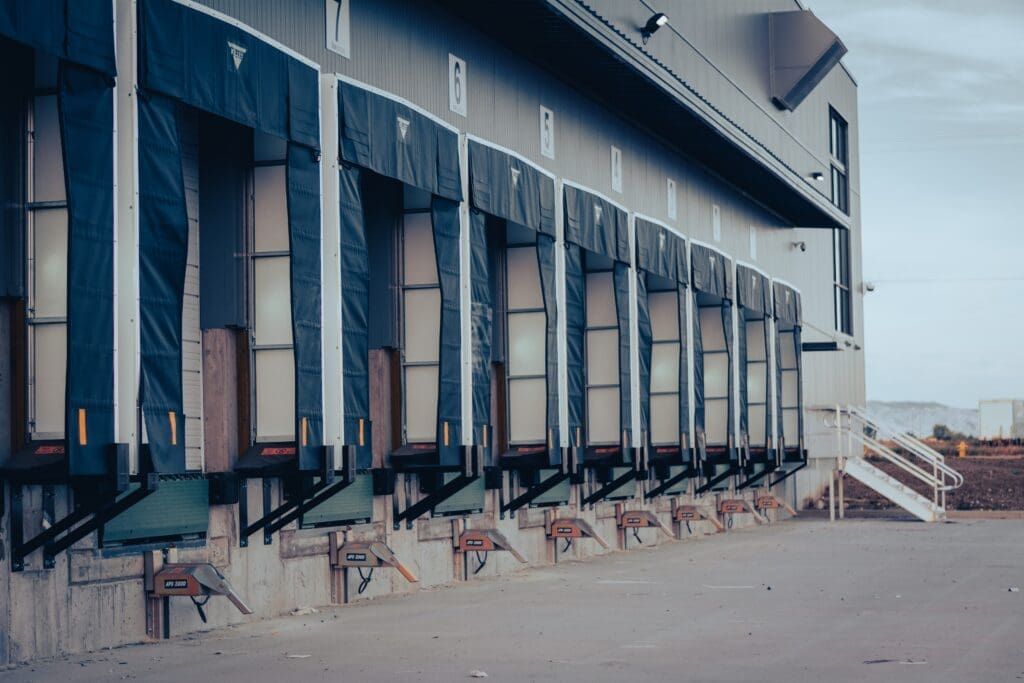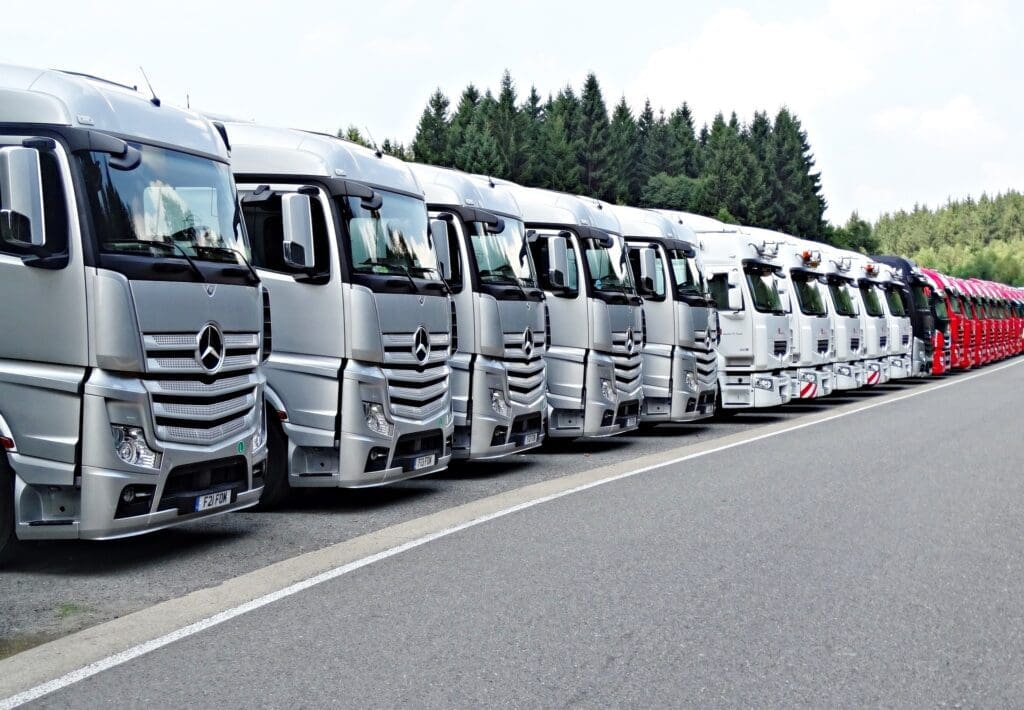Consolidation in logistics: the key to efficient, sustainable and profitable transport
23-10-2025 – Marcel Hoogenraad – Reading time: 8 min
Table of contents
Practical example: flowers and plants in one trip
Who applies consolidation and why?
The benefits of consolidation
The benefits of consolidation in numbers
Did you know…
The downside: complexity in practice
Sustainability and CO₂: the broader impact
Digitalisation as the connecting link
Conclusion: From ‘nice to have’ to ‘must have’
“Consolidation: it’s a term I hear often in conversations with wholesalers, carriers and logistics service providers. Everyone seems to be working with it, but I must admit: until recently I couldn’t explain it in detail myself.
Yet it is showing up more and more, especially in the context of smarter planning, more sustainable driving and more intelligent capacity usage. As I delved further into the topic, one thing became clear: consolidation is fundamentally about efficiency and sustainability. Two themes that not only determine the future of transport but also touch the daily reality of every logistics company.
In my previous blog about the Westland as a logistics powerhouse I wrote about how cooperation and innovation can turn a region into a centre of efficiency. Consolidation fits exactly into that same story. While the Westland is ahead in fresh‑logistics, consolidation shows how the entire sector can move more smartly and sustainably.”
What exactly is consolidation?
Consolidation: how do you capture that in one sentence?
Consolidation is the bundling of separate shipments into one fully‑loaded truck that sets off in a targeted way instead of three half‑empty trips. Instead of three half‑filled trucks all driving to the same distribution centre, one fully‑loaded truck departs.
The principle is simple, but the impact is large. Fewer trips mean lower costs, fewer kilometres, less CO₂ emissions and higher reliability of the logistics chain. In a world where margins are under pressure and sustainability weighs ever more heavily, consolidation is not just a logistics technique, but a strategic choice.
Practical example: flowers and plants in one trip
A logistics service provider in horticulture drove for years with two separate trips:
- Trip 1: Plant delivery to garden centres, 65 km total. The truck was on average two‑thirds full.
- Trip 2: Flower delivery to the same region, 53 km total. The vehicle was one‑third full.
Together a total of 118 km transport and two half‑full trucks.
After analysis it turned out both flows served largely the same delivery addresses. By consolidating these shipments into one combined trip, the driver henceforth drove 95 km instead of 118.
The advantages of consolidation
- The total load factor increased to over 95 percent.
- The number of kilometres driven dropped by over 20 percent.
- A cost saving of approximately 18 percent.
- A CO₂ reduction of around 23 kilograms per trip (based on an average of 1.06 kg CO₂ per kilometre for a medium‑sized truck).
A small adjustment with a big effect: fewer kilometres, less fuel, lower emissions, and still fresh flowers and plants delivered to the customer, on time and in top condition.
Who applies consolidation and why?
Consolidation is no longer a niche practice. It is broadly embedded in various segments of transport and logistics. Below is an overview of where and how it is applied in practice.
- Retailers: Think of supermarket chains that bundle deliveries from multiple suppliers to their regional distribution centres. Instead of ten small trips, three efficient combinations run. That saves planning, costs and CO₂.
- Wholesalers: They consolidate orders from customers who are geographically close to each other. That way one truck can serve several delivery addresses within the same route without unnecessary kilometres being made.
- Carriers and logistics service providers: For them consolidation is business as usual. By combining shipments from different clients, they maximise their load factor and reduce waiting times between loads.
- Producers and exporters: Even in international logistics consolidation plays a role. Multiple export shipments are merged into one container, which lowers costs and optimises utilisation of sea or air freight.
In short: whether it’s fresh logistics, building materials or e‑commerce, wherever shipments intersect, there lies a consolidation opportunity.

The benefits of consolidation
The power of consolidation lies in its simplicity. By bundling smartly, you bring structure to a world full of movement.
Fewer trips, fuller trucks and shorter routes not only result in a more efficient operation but also a noticeable cost and environmental benefit. Whereas planners used to puzzle by hand to optimise routes, today data analytics provides direct insight into which shipments can be combined.
The advantages in numbers
- Up to 30–40% less CO₂ emissions per tonne‑kilometre (Transport & Environment, 2023)
- 20–25% lower transport costs through better load utilisation (European Logistics Association)
- Up to 50% fewer traffic movements in the chain, especially in urban areas
So consolidation makes logistics not only more profitable, but also calmer and cleaner. More on the impact on CO₂ emissions further on in this blog.
💡 Did you know…
Consolidation in logistics is often also called groupage?
There is a subtle difference: in consolidation several shipments are deliberately merged into one efficient trip, often driven by planning and data. Groupage usually refers to combining smaller shipments from different customers into one shared freight.
Both result in fuller trucks, lower costs and lower CO₂ emissions, but where groupage is about sharing space, consolidation is about smart planning.
The downside: complexity in practice
However, it’s not all straightforward. Consolidation sounds simple, but the execution can be quite complex. It requires alignment between customers, suppliers, carriers and distribution points. Delivery times must be correct, volumes must fit and routes must remain flexible.
Without the right tools this quickly becomes a logistics puzzle of proportions. One change in the planning, a delayed delivery or an extra order can unbalance the entire bundling. And this is precisely where technology comes in.
Where once the planner tried to make the ideal combination with spreadsheets and phone calls, software now does it in lightning speed. A modern Transport Management System (TMS) takes over the calculation, links destinations, time windows and cargo types automatically and composes the optimal bundle in seconds.
Within Adaption Logistics Cloud Suite this happens seamlessly. The TMS automatically incorporates consolidation intelligence into the planning logic so that the staff are relieved. The result: less manual work, fewer errors and above all more time for what really adds value.
Sustainability and CO₂: the broader impact
As noted earlier, consolidation directly leads to less CO₂ emissions. But the story goes beyond just the numbers.
Every combined shipment means one trip less on the road. Less fuel consumption, fewer traffic jams, less noise. Moreover, a higher load factor leads to more efficient use of equipment. Trucks less often travel empty or half‑empty.
According to TNO, structural consolidation in medium‑sized transport companies can yield up to a 25 % reduction of the annual CO₂ emissions. Not through large investments in new vehicles, but simply by smarter planning.
Thus consolidation fits perfectly within the growing focus on ESG‑objectives and CO₂ reporting obligations such as the Corporate Sustainability Reporting Directive (CSRD). Companies must provide insight into their environmental impact, and consolidation offers a concrete, measurable way to reduce it.
At Adaption we see that more and more customers link operational data with sustainability reports. The TMS automatically records load factors and kilometres so that the CO₂ emission per trip becomes transparent and conversational.Thus sustainability is no longer a paper promise, but a daily reality on the transport floor.

Digitalisation as the connecting link
Consolidation is like a jigsaw puzzle. You have all the pieces, but without digital support you rarely complete it on time.
Digitalisation forms the catalyst of this process. Where it used to be about experience, gut feeling and phone calls, the modern planner works with real‑time data and smart algorithms. Our TMS analyses within seconds dozens of variables, such as route, weight, loading and time windows, and automatically proposes the most efficient bundle.
The beauty is: the technology doesn’t take over the thinking, but supports the human. The planner retains control but is helped by software that presents the best options.
Within Adaption’s Logistics Cloud Suite consolidation forms one of the smartest links. The system automatically bundles where possible, recognises patterns and adapts to changes en route. Thus digitalisation becomes not only a tool, but the engine of efficient transport.
Or as one customer recently put it:
“What used to take an hour of puzzling, the system now does in ten seconds. And it drives greener too.”
Conclusion: from ‘nice to have’ to ‘must have’
Consolidation has long ceased to be a luxury. In virtually every branch of transport, from retail to construction, from fresh distribution to export, it has become a must‑have.
Those who bundle shipments drive smarter, cleaner and cheaper. It is the direct link between efficiency and sustainability: fewer kilometres, lower fuel costs, less CO₂. And at the same time it means time savings, clarity and calm in planning.
Digitalisation makes all of this scalable. Thanks to software such as the Adaption TMS, companies can apply consolidation structurally without increasing complexity. What once started as a logistics buzzword has today grown into a strategic pillar under modern transport management.
The future of logistics doesn’t lie in driving more, but in driving smarter. And consolidation is not an option anymore, but the standard where efficiency and sustainability meet.
The Adaption Cloud Suite continues to develop continuously. With regular releases we add new functionalities that help our customers make their logistics processes smarter, faster and more reliable.
Sources Overview
Efficiency and Cost Savings Through Consolidation
European Logistics Association (ELA) – “Logistics Trends and Insights Report 2023”
→ Research on cost savings through consolidation and higher load factors.
ELA – The European Logistics AssociationDY Global Logistics Blog – “What are the main benefits of freight consolidation services?”
→ Practical article with examples of cost and efficiency benefits of consolidation.
https://www.dyglobalogistics.com/blog/what-are-the-main-benefits-of-freight-consolidation-servicesAcademia.edu – “Consolidation Impact on Transportation Costs and CO₂ Emissions in Global Supply Chain” (2022)
→ Analysis of the effects of consolidation on costs and emissions in international supply chains.
https://www.academia.edu/73387231/Consolidation_Impact_on_Transportation_Costs_and_CO2_Emissions_in_Global_Supply_Chain
CO₂ Emissions and Sustainability in Transport
Transport & Environment (T&E) – “CO₂ emissions from heavy-duty vehicles: reducing emissions through efficiency and logistics” (2023)
→ Report from a European think tank on emission reduction through load optimisation and logistics.
Europe’s leading advocates for clean transport & energyTNO (Netherlands) – “Emission reduction through optimisation in freight transport” (2021)
→ Dutch study showing consolidation can lead to 20–25% CO₂ reduction.
https://www.tno.nl/nl/aandachtsgebieden/mobiliteit/roadmaps/verduurzaming-transport-logistiek/European Environment Agency (EEA) – “Reducing emissions from transport” (2022)
→ Provides context on European reduction targets and the role of logistics efficiency.
https://www.eea.europa.eu/en/topics/in-depth/transport
Data on Truck CO₂ Emissions
Netherlands Enterprise Agency (RVO) – CO₂ Emission Factors List
→ Reliable reference for calculations: average of 1.06 kg CO₂/km for medium-sized trucks.
https://www.rvo.nl/onderwerpen/duurzaam-ondernemen/energie-en-milieu/energie-en-co2-besparing/co2-emissiefactoren
Want to know how Adaption can optimize your transport?
Looking to reduce errors, shorten lead times, and streamline your logistics processes? Discover the power of Adaption TMS and experience the benefits of advanced transport optimization for yourself.
Contact us today and request a free demo!